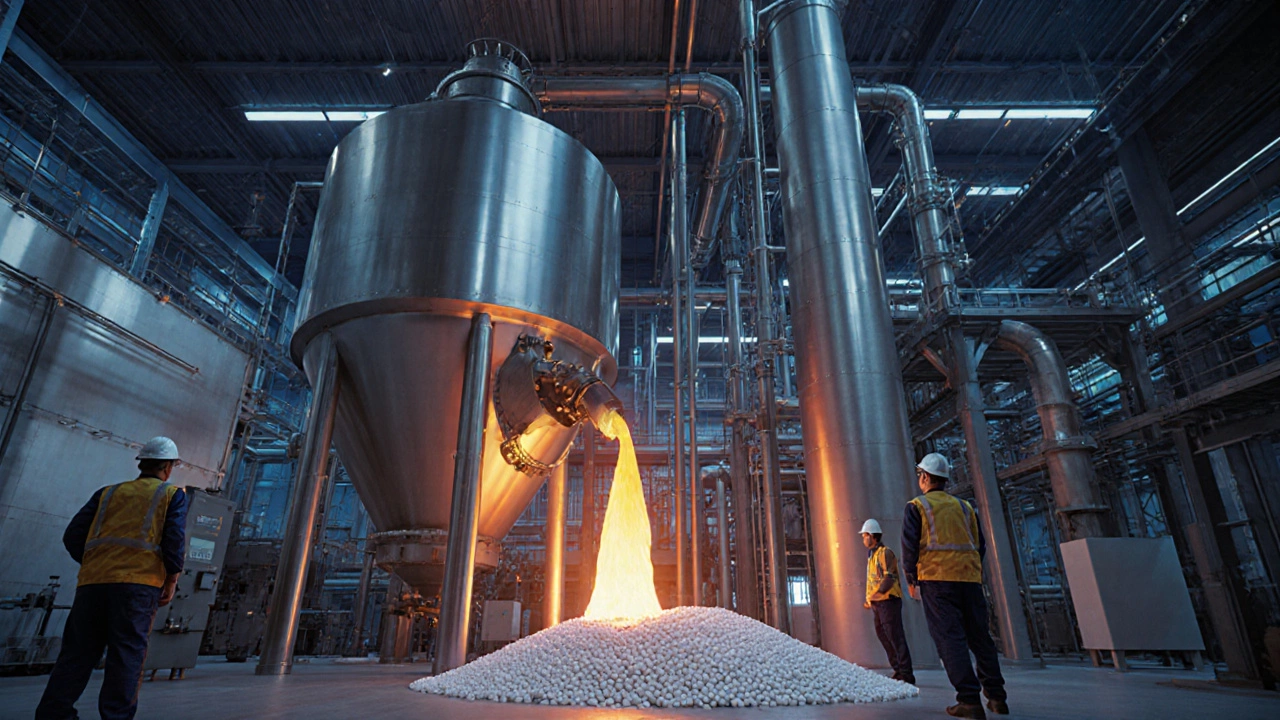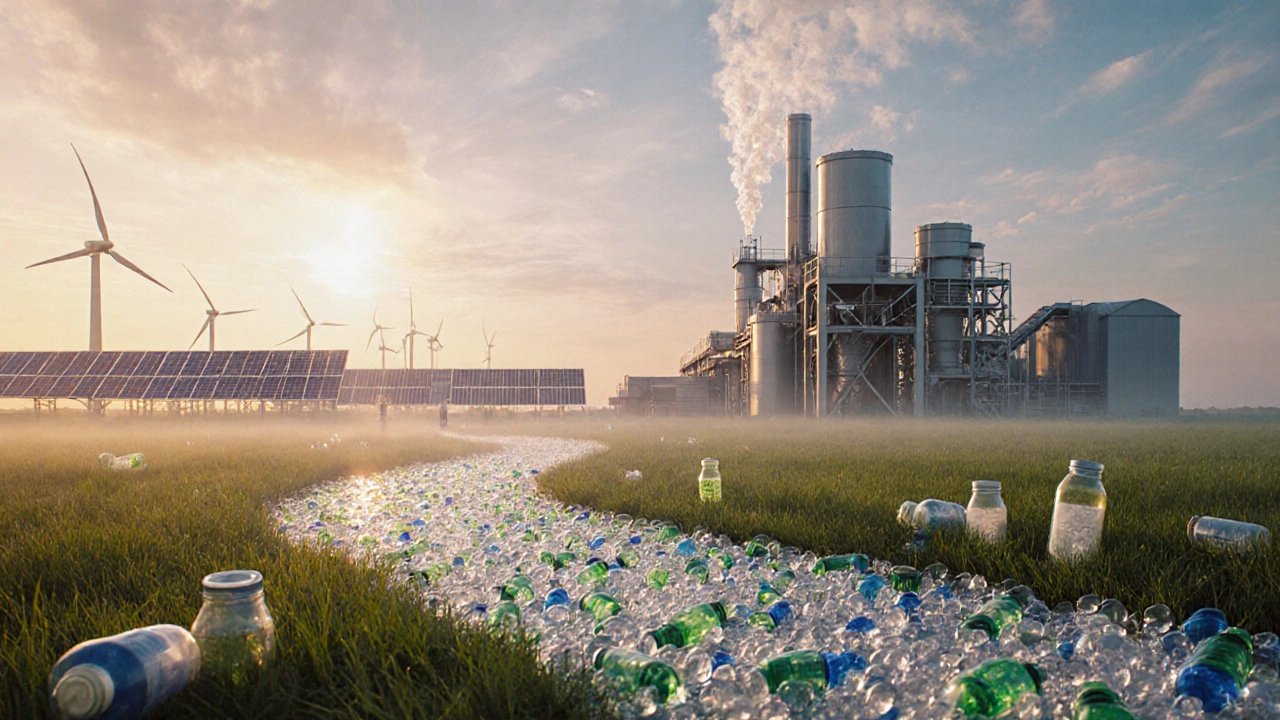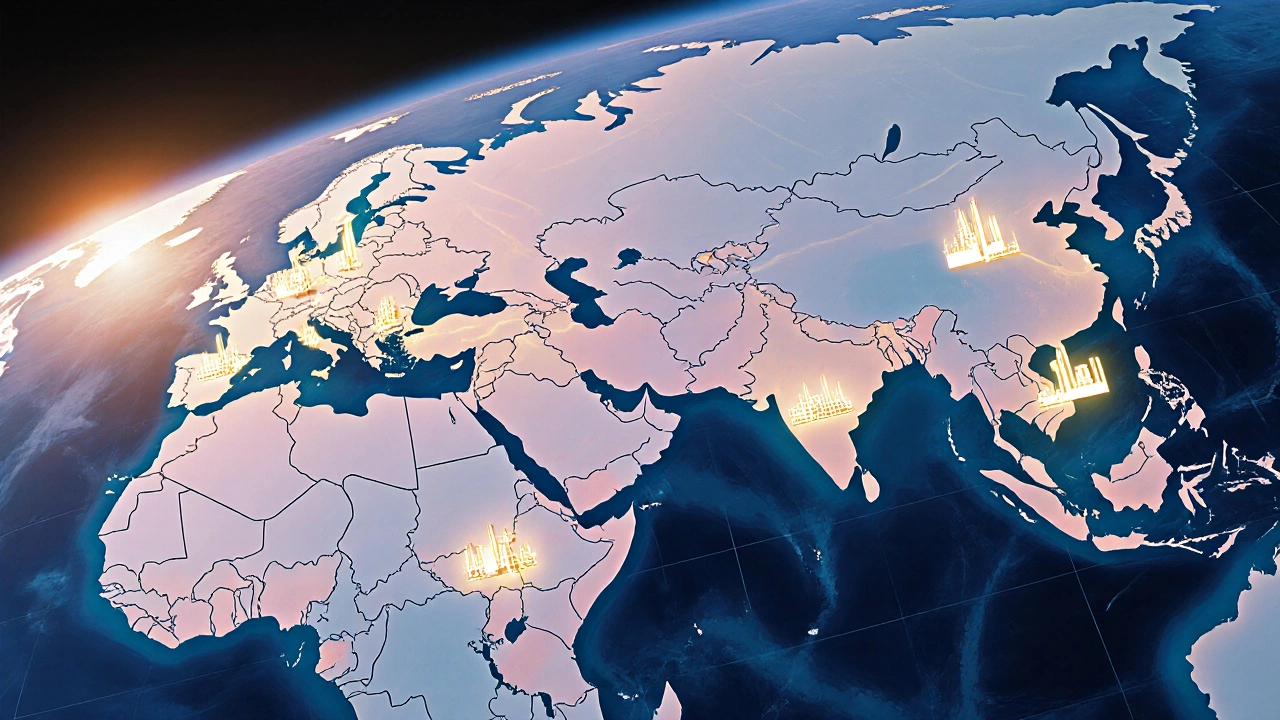Plastic Manufacturer Comparison Tool
When you wonder who makes plastic, you’re really searching for the biggest plastic manufacturers on the planet. These are the firms that turn raw oil and gas into the polymer pellets that become everything from water bottles to car parts. Below we break down the key players, what they produce, where they operate, and how to pick the right partner for your needs.
Key Takeaways
- The global plastics market is dominated by a handful of multinational chemical giants.
- Dow Chemical, ExxonMobil, LyondellBasell, BASF, and SABIC together account for over 30% of worldwide polymer production.
- Geographic reach matters - Asian manufacturers lead in volume, while European firms focus on specialty grades.
- Revenue, capacity, and product mix are the three metrics to compare manufacturers objectively.
- Choosing a partner depends on material requirements, sustainability goals, and regional supply chain considerations.
Who Are the Major Plastic Manufacturers?
Plastic manufacturers are companies that produce polymer resins and finished plastic goods at industrial scale. The leaders fall into two categories: integrated chemical conglomerates that own the entire value chain, and pure‑play polymer producers that focus on specific resin families.
Below is a quick snapshot of the most influential firms as of 2025:
- Dow Chemical - United States, strong in polyethylene (PE) and polypropylene (PP).
- ExxonMobil - United States, world’s largest producer of polyethylene.
- LyondellBasell - Netherlands/USA, leader in polypropylene and specialty chemicals.
- BASF - Germany, extensive portfolio covering engineering plastics and high‑performance polymers.
- SABIC - Saudi Arabia, dominant in polypropylene, PET, and specialty copolymers.
- Formosa Plastics - Taiwan, massive capacity for PVC and PS.
- Eastman Chemical - United States, focuses on engineered plastics and additives.
- DuPont - United States, known for high‑performance fluoropolymers and Kevlar‑type materials.
What Do These Companies Actually Make?
Each giant has a distinct product focus, which determines the industries they serve.
- Dow Chemical - Broad range of PE, PP, EVA, and specialty elastomers used in packaging, construction, and automotive.
- ExxonMobil - Bulk PE grades for film, pipe, and cable insulation; also supplies raw ethylene to other manufacturers.
- LyondellBasell - High‑melt‑flow PP for injection molding, as well as polyamide 6 (PA‑6) for textiles.
- BASF - Engineering plastics like polycarbonate (PC), acrylonitrile‑butadiene‑styrene (ABS), and high‑temperature resins.
- SABIC - Polypropylene for automotive parts, PET for beverage bottles, and a growing line of bio‑based polymers.
- Formosa Plastics - PVC for building profiles, polystyrene (PS) for disposable food containers.
- Eastman Chemical - Acetate and cellulose‑based engineered plastics for medical devices.
- DuPont - Fluoropolymers (e.g., Teflon) for non‑stick cookware and high‑performance seals.

Where Are They Located?
Geography matters for logistics, tariffs, and sustainability. Below is a quick map of regional strengths.
- North America - Home to Dow, ExxonMobil, Eastman, and DuPont. Strong in bulk PE/PP and high‑performance specialty plastics.
- Europe - BASF leads, with a focus on engineering plastics and sustainable chemistries. LyondellBasell also has major sites in the Netherlands.
- Asia‑Pacific - The fastest‑growing market. Formosa Plastics and SABIC have massive facilities in Taiwan, Saudi Arabia, and China, feeding the regional demand for packaging and consumer goods.
- Middle East - SABIC’s integrated refinery‑to‑polymer model gives it a cost advantage for polyolefins.
Comparing Scale: Revenue, Capacity, and Core Products
| Company | 2024 Revenue (USD bn) | Annual Polyolefin Capacity (Mt) | Key Product Focus |
|---|---|---|---|
| Dow Chemical | 55.0 | 30 | PE, PP, specialty elastomers |
| ExxonMobil | 49.5 | 35 | PE (HDPE, LDPE), ethylene units |
| LyondellBasell | 38.2 | 27 | PP, PA‑6, specialty polyolefins |
| BASF | 78.0 | 22 | Engineering plastics, ABS, PC |
| SABIC | 45.3 | 31 | PP, PET, bio‑based polymers |
| Formosa Plastics | 23.4 | 28 | PVC, PS, acrylics |
| Eastman Chemical | 7.9 | 8 | Engineered plastics, additives |
| DuPont | 16.1 | 5 | Fluoropolymers, high‑performance fibers |
The table shows why Dow, ExxonMobil, and BASF dominate revenue, while companies like Formosa excel in sheer polyolefin volume. Your choice will depend on whether you need bulk low‑cost resin or a niche high‑performance polymer.

How to Pick the Right Manufacturer for Your Project
Evaluating a plastic supplier can feel overwhelming, but focus on three practical criteria.
- Material Fit: Does the company produce the exact grade you need? Ask for datasheets that list melt flow index, density, and additives.
- Supply Chain Reliability: Look at the geographic location of the plant relative to your factories. Proximity reduces lead time and carbon footprint.
- Sustainability Commitment: Many buyers now require recycled content or carbon‑neutral production. Check the manufacturer’s ESG reports; BASF and SABIC have clear targets for 2030.
Contacting the sales engineering team early can also uncover custom compounding options that save you a step in downstream processing.
Current Challenges and Future Trends
Even the biggest plastic manufacturers face headwinds.
- Regulatory pressure - The EU’s upcoming single‑use plastic ban pushes firms toward recyclable resin families.
- Feedstock volatility - Natural gas price swings directly affect polyethylene costs.
- Circular economy shift - Companies are investing in chemical recycling (e.g., Dow’s “Revolution” plant) to keep plastics in the loop.
- Innovation race - Bio‑based polymers from plant sugars (SABIC) and high‑performance composites (DuPont) are gaining market share.
Staying aware of these trends helps you anticipate price changes and align with partners that are future‑proof.
Final Thoughts
Knowing who the major plastic manufacturers are gives you a clear starting point for any sourcing or partnership project. Whether you need cheap bulk polyethylene from ExxonMobil or high‑tech fluoro‑polymers from DuPont, the data above lets you compare revenue, capacity, and product focus at a glance. Use the three‑step checklist to match material specs, logistics, and sustainability goals, and you’ll make an informed choice that supports both cost efficiency and long‑term resilience.
Which company produces the most polyethylene?
ExxonMobil leads global polyethylene production, with an annual capacity of about 35 million tonnes, followed closely by Dow Chemical and SABIC.
Are there any plastic manufacturers focused on recycled resin?
Yes. Dow’s “Revolution” plant in Texas and SABIC’s circular‑economy program both produce high‑content recycled polyethylene and polypropylene for packaging applications.
What’s the difference between polyolefins and engineering plastics?
Polyolefins like PE and PP are cheap, easy to process, and used for packaging, films, and containers. Engineering plastics such as polycarbonate, ABS, and PBT have higher strength, heat resistance, and are used for automotive parts, electronics, and medical devices.
How can I verify a manufacturer’s sustainability claims?
Look for third‑party certifications (e.g., ISO 14001, Cradle‑to‑Cradle) and published ESG reports that include carbon intensity per tonne of resin. Independent auditors like CDP also rank companies on climate transparency.
Which manufacturers have the strongest presence in Asia?
Formosa Plastics (Taiwan), SABIC (Saudi‑Asia joint facilities), and LyondellBasell’s Singapore plant are leaders in Asian polyolefin capacity, serving fast‑growing consumer markets.

